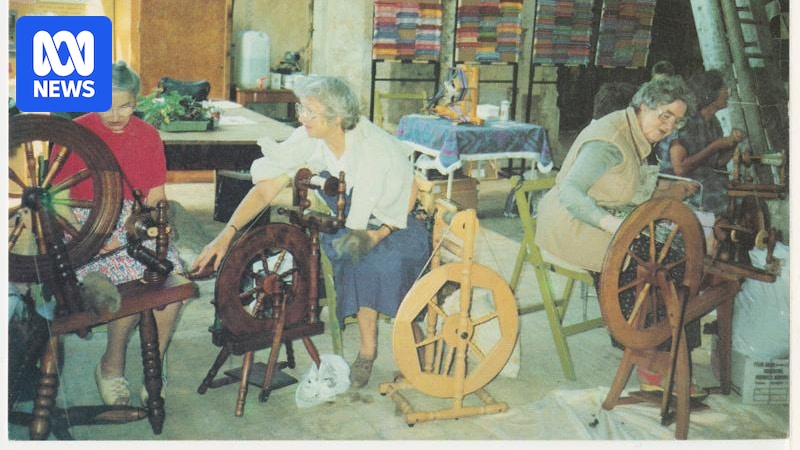
When the public announcement system crackled to life at Wodonga Technical School in 1976, Peter Klein didn’t hesitate. Macquarie Textiles in Albury was seeking an apprentice dye chemist, and the form five student wanted in. A quick conversation with his chemistry teacher sealed the deal. “They said, ‘Why don’t you give it a go?'” Mr. Klein recalled. So he did, and he got the job. It was a modest salary to begin with; his wage at the mill was about $64 a week. But it was the start of a career — and a life’s work — that would last more than 20 years.
Decades of Manufacturing Excellence
Macquarie Textiles, also known as Amalgamated Textiles and Macquarie Worsteds, operated in Albury between 1923 and 2020. Established by local graziers, it produced wools, blankets, and industrial cloth for everything from high-end fashion to leading building designers. Albury Library Museum curator Sandra Endresz noted that after a 1994 expansion, it was the largest wool mill in Australia.
“By then, they were producing 80 percent of the domestic wool and cloth in Australia, and supplying nearly all the woollen cloth for uniform fabric for the Australian Defence Force,” Ms. Endresz said.
Macquarie Textiles made fabric for police uniforms, Olympic athletes, major retailers, and high-end designers. The company supplied everyone from David Jones and Country Road to Carla Zampatti and Anthea Crawford, while its fabrics featured in Parliament House, Qantas lounges, and the Sydney Opera House. Mr. Klein, who worked there until the late 1990s, said it had a reputation for the “best fabrics in the world”.
A Multicultural Workforce
The factory initially brought over workers and machinery from Bradford — a UK region renowned for its textile industry. It also provided work for numerous migrants who came to Australia after World War II via the Bonegilla Migration Reception and Training Centre.
“Including the very first displaced persons to arrive from the Baltic countries,” Ms. Endresz said.
The mill had a significant effect on the local economy, starting with a staff of about 200 people before burgeoning to a peak of 700. “Who knows how many people worked there? Over the years, it must have been in the thousands,” she said. “They have always made high-quality fabrics, textiles, and yarn, and we can be very proud that we made this in Albury.”
Challenges and Triumphs
Mr. Klein’s handiwork made headlines in the 1970s, though not for reasons he might have hoped. He was working on color-matching for Victoria Police’s uniforms and had selected a dye that came from Switzerland. When his stock of the dye ran out, he was forced to have a difficult conversation with the mill’s manager, Jim Barr.
“He said, ‘Pete, we were just mentioned in parliament. They want to know why the police uniforms weren’t ready,'” Mr. Klein recalled.
Mr. Klein was also involved in matching curtains and seating for Australia’s new Parliament House, which opened in 1988. That work led to a particularly proud moment for the company, Mr. Klein said.
“When it lit up at night, all the Bogong moths came in and ate all the fabric curtains — except the Macquarie Textiles ones, because we added a moth-proofing agent and everyone else forgot,” he said.
The mill’s legacy is now on display at Albury Library Museum in an exhibition featuring photographs, fabric samples, uniforms, and donations from former employees and customers. The exhibition runs until April 19, offering a glimpse into the rich history and contributions of Macquarie Textiles to the community and the nation.
This development follows the broader narrative of Australian manufacturing history, where local industries have often faced challenges from global competition and changing economic landscapes. Yet, the story of Macquarie Textiles serves as a testament to the enduring spirit of innovation and craftsmanship that has defined the region for nearly a century.







